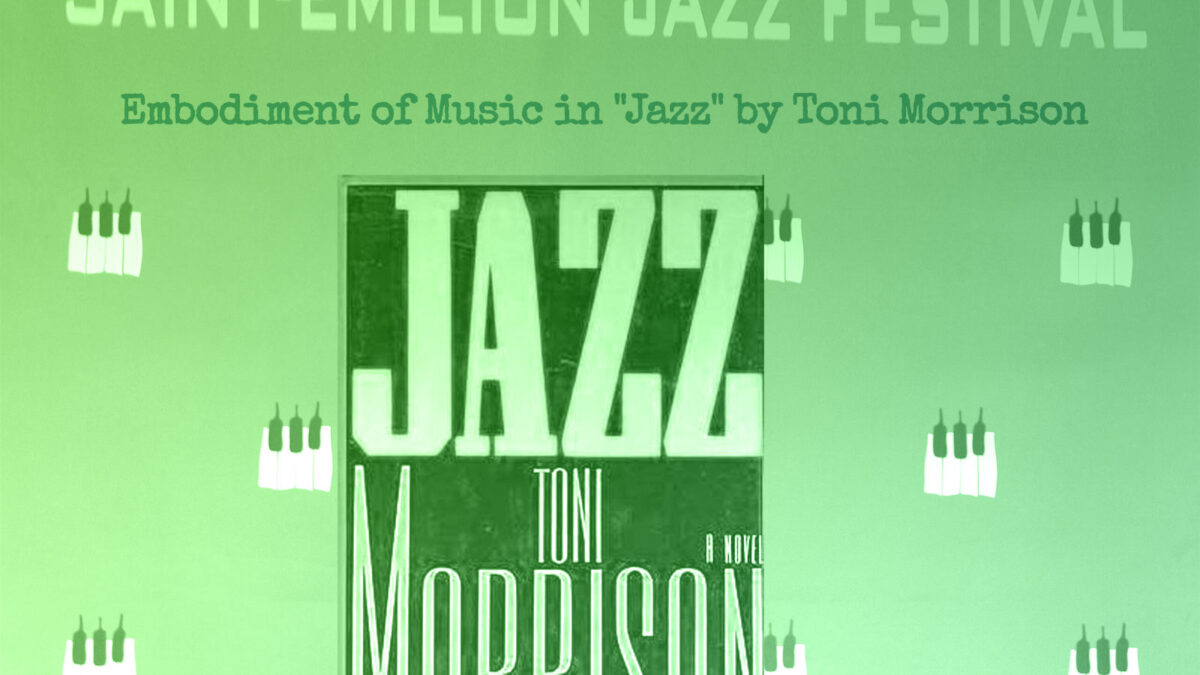In Toni Morrison’s novel Jazz, point-of-view shifts through the first-person voices of the characters of the story. The narrative passages of these voices are organized around a central conflict and the inflecting narrative root voice, and nodes of conversational, gossiping demeanors. The voices build history and describe the shaping of their lives and perspectives that have led North, to the city, from the rural Southern countryside.
Music exists as the dynamics of these voices against the page while reading, and too, as the music played from roofs of buildings by persons who stand against the sky, their feet on the surface of multitudinous veils that erratically characterize an urban condition. Music is thematically involved with narrative in great complexities. Morrison’s epithet, from “Thunder, Perfect Mind,” The Nag Hammadi, serves as example:
I am the name of the sound
and the sound of the name.
I am the sign of the letter
and the designation of the division
The city becomes forefront with the foundational effect of grounding disparaged tides of emotional recession, and shows the ways in which those itself defines. While painting a more personal and feminine attitude of the tragedy, it shapes a neutral attitude that defies tragic inclusion, as if the last testament or mind of Dorcas after being shot by Joe Trace.
One definite aspect of the music function is that it is pervasive, and that it exists to a high degree of potency where ears do not. The most noble purpose of music is love, and love is sought like an object within the city. Morrison couples the characters of this novel and the characters of its periphery, into the music of the city. In the following passage, of Baltimore once the spring has come:
“And when spring comes to the City people notice one another in the road; notice the strangers with whom they share aisles and tables and the space where intimate garments are laundered. Going in and out, in and out the same door, they handle the handle; on trolleys and park benches they settle thighs on a seat in which hundreds have done it too… It’s the time of year when the City urges contradiction most, encouraging you to buy street food when you have no appetite at all; giving you a taste for a single room occupied by you alone as well as a craving to share it with someone you passed in the street. Really there is no contradiction—rather it’s a condition: the range of what an artful City can do” (Morrison 117-18).
What the city can do is often what evades the main characters. The marvelous skyscapes at sunset with the colors and shapes of forgotten childhood memories, those hiding scents and details reminiscent of images that can only seem to appear in the past. Otherwise, these feelings and thoughts are sensed as if heard through the resonance of the city, but only by strands of narrative arranging freely within the vastly invisible strictures of this emotionally nebulous medium. Something with a lack of sight for the past can evidence a deafening affect, can contain and insinuate a tragedy of love like that of Joe and Dorcas. Joe suffers this symptom of deafness as he proceeds on after the sweetness of love on currents of desire.

